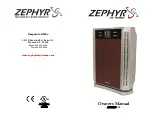
3
TCH030
TCH030
2
TECHNICAL CHANGES
Refrigerant
oil
Refrigerant
New refrigerant
R410A
HFC-32: HFC-125 (50%:50%)
Pseudo-azeotropic refrigerant
Not included
A1/A1
72.6
−51.4
1.557
64
Non combustible
0
1730
From liquid phase in cylinder
Possible
Incompatible oil
None
None
Previous refrigerant
R22
R22 (100%)
Single refrigerant
Included
A1
86.5
−40.8
0.94
44.4
Non combustible
0.055
1700
Gas phase
Possible
Compatible oil
Light yellow
None
Refrigerant
Composition (Ratio)
Refrigerant handling
Chlorine
Safety group (ASHRAE)
Molecular weight
Boiling point (°C)
Steam pressure [25°C](Mpa)
Saturated steam density [25°C](Kg/
K
)
Combustibility
ODP *1
GWP *2
Refrigerant charge method
Additional charge on leakage
Kind
Color
Smell
*1: Ozone Depletion Potential
: based on CFC-11
*2: Global Warming Potential
: based on CO
2
INFORMATION FOR THE AIR CONDITIONER WITH R410A REFRIGERANT
• This room air conditioner adopts an HFC refrigerant (R410A) which never destroys the ozone layer.
• Pay particular attention to the following points, though the basic installation procedure is same as that for R22 conditioners.
As R410A has working pressure approximate 1.6 times as high as that of R22, some special tools and piping parts/materi-
als are required. Refer to the table below.
Take sufficient care not to allow water and other contaminations to enter the R410A refrigerant during storage and installa-
tion, since it is more susceptible to contaminations than R22.
For refrigerant piping, use clean, pressure-proof parts/materials specifically designed for R410A. (Refer to 2. Refrigerant
piping.)
Composition change may occur in R410A since it is a mixed refrigerant. When charging, charge liquid refrigerant to prevent
composition change.
NOTE
: The unit of pressure has been changed to MPa on the international system of units (SI unit system).
The conversion factor is:
1 (MPa [Gauge]) =10.2 (kgf/cm
2
[Gauge])
New Specification
Current Specification
The incompatible refrigerant oil easily separates from
refrigerant and is in the upper layer inside the suction muffler.
Raising position of the oil back hole enables to back the
refrigerant oil of the upper layer to flow back to the
compressor.
Since refrigerant and refrigerant oil are compatible with
each other, refrigerant oil backs to the compressor through
the lower position oil back hole.
Compressor
Suction muffler
Oil back hole
Refrigerant oil
Refrigerant
Compressor
Suction muffler
Oil back hole
Refrigerant oil /Refrigerant
Compressor




































